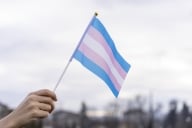You have /5 articles left.
Sign up for a free account or log in.
For as long as I can remember, I have heard other people say, “Rape isn’t about sex -- it’s about power.” The word “power” itself is not gendered, but in the context of sexual violence dialogue, that sentence is gendered. In the early days of sexual violence and intimate partner violence research, “power” became synonymous with “patriarchy.” Nowadays we hear about “toxic masculinity” and “rape culture,” but the conversation is still highly gendered and heteronormative.
Before I address sexual violence in academe, I want to provide some background and context for my interest in the subject. When I first came out in 1994, I identified as a lesbian; today, I identify as queer. For much of my young adulthood, I was behaviorally bisexual. This means that even though I identified as a lesbian, I was not exclusively involved with feminine people.
When I was 20, I was involved with a heterosexual cisgender man. Although he would have probably exercised coercive control in any relationship, my sexual orientation intensified the situation. He used my sexuality against me, saying, “Since you’ve been with women and you’re with me now, I cannot trust you with men or women.” From his perspective, because I was (behaviorally) bisexual, I was incapable of monogamy (a tired biphobic stereotype), and therefore he was justified in cutting off the friends that I had, preventing me from making new ones and monitoring my time and actions. He timed me when I rode my bike to 7-Eleven, stating, “If you’re not back in 15 minutes, I’m coming to look for you.”
According to the Centers for Disease Control report “The National Intimate Partner and Sexual Violence Survey: 2010 Findings on Victimization by Sexual Orientation,” more than 60 percent of bisexual women experience some form of intimate partner violence or sexual violence. As a survivor of IPV, I felt simultaneously validated and depressed upon discovering this information. I knew that I was not alone, but I was saddened that the rate was so high.
Heterosexual, cisgender and LGBTQ people alike experience various types of abuse: sexual violence, coercive control, physical violence, verbal abuse, psychological abuse, emotional abuse, reproductive control, stalking and so on. However, for LGBTQ victims, there are additional layers of victimization that are not present in cisgender, heterosexual relationships.
For example, coercive control may include the threat of being outed, which may result in the loss of employment, housing or child custody. Same-gender IPV is often seen as a “fair fight” from the perspective of law enforcement, counselors and other social workers. And the heteronormative framing of sexual violence and IPV prevents many LGBTQ victims from even realizing that what they are experiencing is abuse. As I sought more information, a hard truth revealed itself.
Two Forms of Deafening Silence
I am originally from Oklahoma, but I was living in Texas when I came out. Those were not the best places to be queer, especially in the mid-1990s. Additionally, I grew up and came out in a time when LGBTQ people were virtually invisible. Lack of representation is incredibly invalidating and psychologically destructive. It is even worse than being the subject of debate. At least if politicians, the media, researchers and the like are talking about LGBTQ folks, we exist. For me, growing up in the 1980s and 1990s, the silence was deafening.
Today, I am an undergraduate sociology major with an interest in LGBTQ studies and queer theory. I am also 41 years old. I mention my age to highlight the fact that I am not where I am by accident. I am deeply invested -- emotionally, psychologically and intellectually -- in this field. Despite the awareness I gained last semester about the challenges of being queer in academe, my goals are still to complete my doctorate in sociology and conduct research in gender and sexuality. Specifically, I am interested in how the gendered framing of sexual violence and IPV negatively affects LGBTQ communities and the subject over all.
The 2016-17 academic year was my hardest one yet, and it is because I again encountered that deafening silence -- this time, in the context of sociological research. Don’t get me wrong: I knew academe has its issues, just like the rest of society. But I was surprised to find such a complete lack of research published in mainstream sociological journals about LGBTQ individuals and communities. After all, LGBTQ issues are being represented at ever increasing rates. That is where my naivety revealed itself. I thought that if The Huffington Post, National Geographic and Vice News were reporting on LGBTQ issues, I should not have any problems finding articles in mainstream sociology journals. I was wrong.
What I found regarding IPV research in LGBTQ communities came from LGBTQ-specific journals, such as Journal of Bisexuality, Journal of Homosexuality and Journal of LGBT Issues in Counseling. Those journals are publishing extraordinary work, and I am grateful they exist. But with every article I read, I thought, “Nobody cares about us but us.” And, as I worked on a research project for a class that required the use of articles from mainstream sociological journals, this thought repeatedly went through my head: “We really are invisible.”
Deafening. Silence. The message that silence sends is that LGBTQ people are not a significant enough population to study and that we have nothing to contribute. I argue that the opposite is true. Understanding of sexual violence and IPV will be stalled until we dig deeper into their underlying sociological phenomena.
Breaking the Silence
I recognize that LGBTQ individuals are a numerical minority. I understand that most people are cisgender and heterosexual. I recognize there are challenges with sampling procedures and operationalization when studying sexual and gender minorities. I can see how people involved in research -- from the researchers themselves to the funding sources to the universities in which research takes place -- take the stance that resources should go to the largest majority of victims (cisgender, heterosexual women).
But the fact that IPV and sexual violence are found in lesbian and gay relationships proves that there is more to the phenomenon than cisgender, heterosexual men victimizing cisgender, heterosexual women. Which leads back the sentiment I echoed at the beginning: sexual violence is not about sexual activity or desire -- it is about power.
I also recognize that masculinity is held in higher esteem in our society than femininity, which lends itself to more abuse of power. I am not saying that sexual violence has nothing to do with toxic masculinity; I am saying that toxic masculinity is not exclusive to cisgender, heterosexual men. For example, cisgender lesbians and trans men can also be misogynistic and/or abusive. Additionally, we are all socialized in rape culture, regardless of our identities. Including LGBTQ individuals in IPV and sexual violence research has the potential to shift the focus from seeing sex as a variable that is used to explain prevalence (he did it because he is a man) to one variable among many. These variables could include economic status, drug and alcohol abuse, history of abuse in childhood, or internalized biphobia, homophobia or transphobia.
Sociology is well suited to this inquiry. While criminology and feminist studies argue about gender symmetry in IPV (such as whether women abuse men as much as men abuse women), sociology could be, and should be, asking different questions. For example, how do power and dominance relate to ideas of gender, and how do those ideas manifest in all types of relationships? How do power and dominance intersect with race, ethnicity, social class, gender identity and expression, disability, and sexual orientation? How can queer theory be incorporated into sociological research, particularly to understand sexual violence?
It is time that we start finding answers to those questions. It is time to recognize that even though LGBTQ people are a numerical minority, we have distinct insights and contributions to offer. The lives of all victims of sexual violence and intimate partner violence depend on it.




